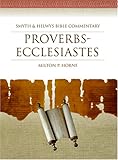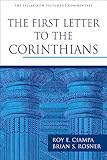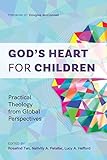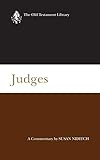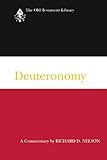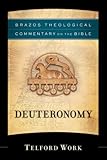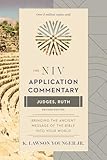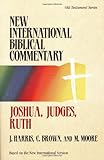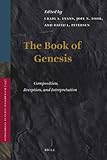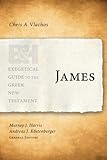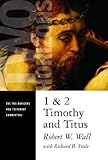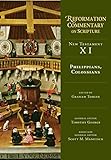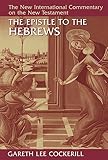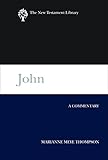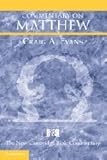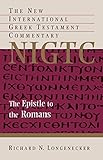MARC details
| 000 -LEADER |
|---|
| fixed length control field |
05126nam a22001817a 4500 |
| 005 - DATE AND TIME OF LATEST TRANSACTION |
|---|
| control field |
20220301063809.0 |
| 007 - PHYSICAL DESCRIPTION FIXED FIELD--GENERAL INFORMATION |
|---|
| fixed length control field |
ta |
| 008 - FIXED-LENGTH DATA ELEMENTS--GENERAL INFORMATION |
|---|
| fixed length control field |
160808s2011 sa ||||fom| | 00| e eng d |
| 040 ## - CATALOGING SOURCE |
|---|
| Original cataloging agency |
ZA-BrSAT |
| Transcribing agency |
ZA-BrSAT |
| 100 ## - MAIN ENTRY--PERSONAL NAME |
|---|
| 9 (RLIN) |
77 |
| Personal name |
Howell, Timothy Dale |
| 245 ## - TITLE STATEMENT |
|---|
| Title |
Examining the Jewish Origins Employed in the Matthean Beatitudes Through Literary Analysis and Speech Act Theory |
| 260 ## - PUBLICATION, DISTRIBUTION, ETC. |
|---|
| Place of publication, distribution, etc. |
Johannesburg, South Africa |
| Name of publisher, distributor, etc. |
South African Theological Seminary |
| Date of publication, distribution, etc. |
2011 |
| 300 ## - PHYSICAL DESCRIPTION |
|---|
| Extent |
399p |
| Other physical details |
PDF |
| Dimensions |
A4 |
| Accompanying material |
Table of contents. Bibliography |
| 502 ## - DISSERTATION NOTE |
|---|
| Degree type |
Doctor of Philosophy in Theology (PhD) |
| Name of granting institution |
South African Theological Seminary |
| Year degree granted |
2011 |
| Supervisors |
|
| 520 ## - SUMMARY, ETC. |
|---|
| Summary, etc. |
Many models have been offered in explaining the meaning of the Beatitudes. Generally, the focus is on the eschatological, ethical, sapiential, or epitome. The model proposed in this study does not replace but rather complements the other models. The proposed model is sensitive to the Jewish metanarrative that guided the Matthean composition. The primary question of this study is how the Beatitudes demonstrate that Matthew intended to utilize Jewish concepts as a paradigmatic utterance for the Matthean community. Matthew’s paradigm was the needed transition for understanding the role of the new community post 70 AD. The Beatitudes have theological and literary significance for the Christian community. The theology of blessing dominates the pericope. Other themes, such as kingdom and righteousness, have significant roles through the blessing motif. The Gospel of Matthew was the most Jewish of the Synoptic Gospels. The importance and role of Jewish concepts can be demonstrated in the developing paradigm constructed by Matthew. Since the Beatitudes were a literary composition, this study employed both exegetical and literary analysis to the pericope. The historical and social reconstruction of the Matthean community is examined to evaluate its role in the Matthean composition. In using comparative analysis to Second Temple literature, the Matthean composition demonstrates a proclivity toward Jewish concepts. The literary analysis reveals a poetic arrangement encased in a mixed genre of apocalyptic and wisdom tradition. Furthermore, with literary analysis, the Beatitude pericope will be shown to have had a mnemonic purpose in performing the Beatitudes in both the Matthean community and future Christian communities. The literary nature of the Beatitudes demonstrates a composition that developed orally. Speech act theory is utilized in understanding the oral features of the text as well as demonstrating what Jesus did in his utterances. The significance of the Beatitudes lies in the authoritative utterances of Jesus. viBy employing speech act theory on the Beatitudes, the sayings of Jesus are investigated to demonstrate the force of the utterances upon the Matthean community. It is understood that Matthew intended to compose a pericope in serving as a paradigmatic utterance to guide the Matthean community in its existence and mission in the world. In addition, the paradigm is to be adopted by all Christian communities in their mission to the world. This study found six principles guiding speech act theory on the Beatitudes. A speech act model is presented and applied to the Beatitudes pericope (Matt 5:3-16). The formula is SP+(EE)CH=ACT: analyze the Situated Performativity of a text, add it to the multiplying nature of Existential Engagement by the interpreter with the illocutionary force found through the Critical Horizon of guiding worldviews, and the result is an Acquired Communal Translation for the social body. Performative utterances provide a situation for the speaker and audience to engage in their roles of communication within the world of reality to which the language speaks. It is through the imagination and compliance of the hearer whereby the illocutionary force has successful results. Through ritual or performance, the significance of the Beatitudes occurs in the experience of utterance. The experience of the social body has a multiplying effect as it bridges the situated performative text (“SP”) to the present “SP+(EE)”. The existential role advocated in this model is more pragmatic than philosophical. The strength of engagement is relative to how a social body measures or values the illocutionary force. From this model, it is concluded that Matthew intended for he Jewish concepts interwoven through the literary and theological construct of the Beatitudes, to be adopted by the new community, serving as a paradigmatic utterance for understanding its existence and purpose in representing Jesus as the presence of God in the World. |
| 650 #0 - SUBJECT ADDED ENTRY--TOPICAL TERM |
|---|
| 9 (RLIN) |
25 |
| Topical term or geographic name entry element |
Exodus, The |
| General subdivision |
Jewish origins |
| Geographic subdivision |
South Africa |
| 942 ## - ADDED ENTRY ELEMENTS (KOHA) |
|---|
| Source of classification or shelving scheme |
Dewey Decimal Classification |
| Koha item type |
Thesis |

